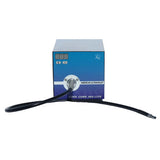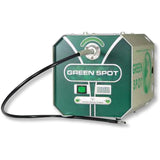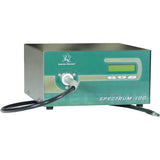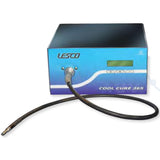UV Curing: A Growth Industry
Posted by Dave on for ProLampSales

Dating back to the late 1960's and early 1970's, ultraviolet light was used to cure wood fillers and coatings on furniture. Since then, with the development of a wide range of UV curable materials and specialized equipment, UV curing has grown exponentially - widely adopted in manufacturing, graphic arts, and printing.
Technically, UV curing is the polymerization of a coating, adhesive, or ink when it interacts with ultraviolet radiation. This process makes possible rapid drying and curing without the use of heat or solvents - a distinct advantage when working with heat-sensitive materials.
UV curing relies on chemical reactions triggered by photo initiators that are part of the formulations for adhesives, inks, and coatings. When exposed to wavelengths between 100 and 450 nanometers, the photo initiators cause a change in the molecular structure of materials, resulting in rapid, almost instantaneous, curing.
High Demand for UV Curable Resins
Because of the demand from end-users, the UV curable resin market today is a multi-billion dollar industry experiencing significant year-over-year growth. Increased consumption, driven by applications including wood product coating, industrial manufacturing adhesives, graphic arts and printing ink curing, and others, have had a major impact on the development of curable resins.
The latest innovation has been development of LED UV sensitive resins and inks. LED UV curing produces less heat than mercury lamp based UV, which expands the range of materials that can used. One example is the use of LED UV curing for drying inks on flexible plastic packaging materials that are highly sensitive to heat.
In addition to reduced heat output, the energy efficiency of LED and long life compared to mercury lamps has resulted in greater demand as regulatory agencies emphasize safe, odor-free, sustainable materials.
Examples of UV Curing Applications
Medical Devices. UV curing adhesives are a preferred bonding technique when manufacturing medical devices because the process allows for a fast cure without a solvent and ease of automation.
Electronics and Optoelectronics. UV curing systems adapt well to the demands of high speed, high volume manufacturing and assembly where precision control and repeatability are required.
Coatings. UV curing allows for bonding glass, stainless steel, plastic and rubber coatings to a wide variety of substrates.
Digital Printing. With the availability today of a wide range of LED sensitive inks, LED UV curing provides extremely fast dry times with minimal heat impact. This allows for high printing speeds without compromising high production values.
Featured Products (View All)
- 0 Comments
- Posted in Ultraviolet Light
0 Comments




